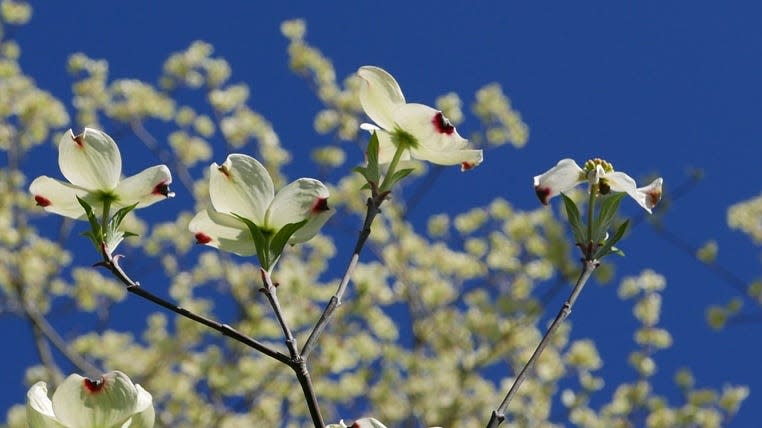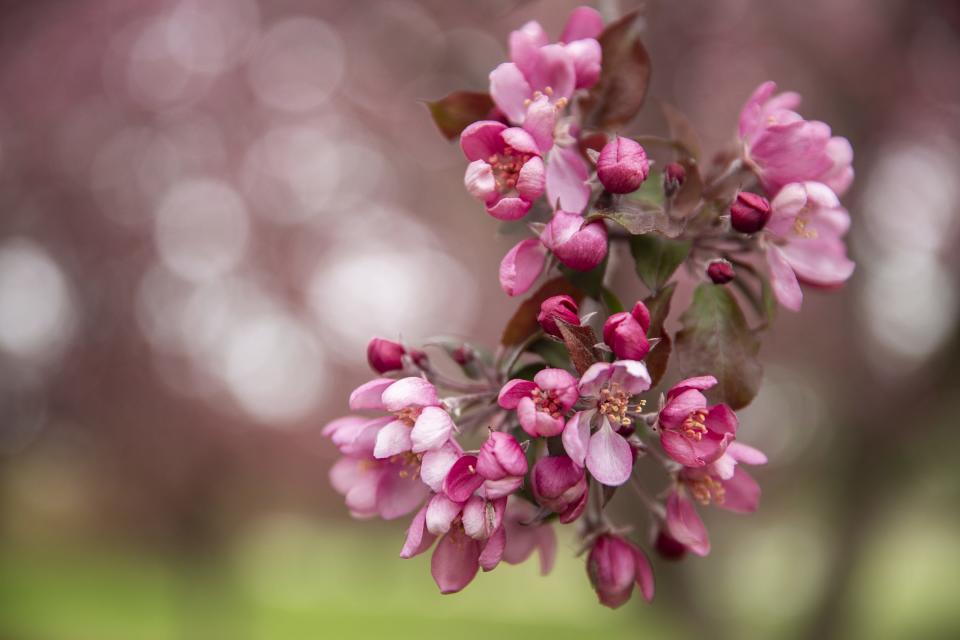Spring has been good for blooming trees and shrubs. Here are some that are performing well.
So far, this spring has been good for blooming trees and shrubs.
One that comes to mind is Saucer Magnolia. This lavender-blooming, multi-stemmed tree is still holding on to blooms in some areas. The Saucer Magnolia, also called Tulip Magnolia and commonly sold as "Jane" cultivar, is a good choice for small landscapes, as its height remains under 30 feet.
Too often Saucer blooms can be damaged by late frosts, but this was a good year for its fuzzy buds. Personally, I think the risk of frost is worth it for this tree. A close cousin to the Saucer is the Star Magnolia, another spectacular bloomer with pink or white fragrant blooms. The Star Magnolia is less susceptible to frost than Saucer and makes another great addition to a small landscape.
Red Maples are generally planted as shade trees. The red flowers of this maple, and its brilliant red foliage in autumn, are the reasons this tree has its name. Red Maples are one of the most popular landscape trees in the Southeast and are a great source for shade on larger lots.
Mid- and late-spring bloomers are also taking advantage of mild temperatures. Eastern Redbud is in full bloom from its native habitat along wood edges to home landscapes. Typically we associate lavender blooms to this deciduous beauty, but one cultivar, Appalachian Red, produces red flowers. Another cultivar, Forest Pansy, has glossy red foliage for use in shade. Redbuds make great additions to the landscape and are especially attractive when planted in a mixed border of spring blooming daffodils and tulips.

Would spring be the same with the Flowering Dogwood? The white-blooming Cherokee Princess and the red-blooming Cherokee Chief are two good dogwood selections for Kentucky. Powdery mildew is a tough disease on dogwood; however Jean’s Appalachian Snow, Karen’s Appalachian Blush, and Kay’s Appalachian Mist are three cultivars that have resistance to this problem.
One of my favorite bloomers is the Crabapple. These trees have long been avoided because of disease problems. Crabapples are susceptible to scab, powdery mildew, rust, and fire blight and I have seen some trees that look like they have all four at once.
But there are resistant cultivars that could change your opinion of crabapples. Candied Apple (a pink bloomer), Prairifire (a pinkish-red bloomer), and Sargentii (a white bloomer) are three cultivars with excellent resistance to all four diseases.

If you are looking for something unusual for spring color, try Fothergilla. This shrubby, white-spiky bloomer produces flowers similar to bottlebrush buckeye and maintains a natural, round shape in the landscape. Fall color is an even better reason to plant Fothergilla as bright red, orange and yellow foliage often abound on the same shrub.
If you are reading this article and shaking your head because you have not noticed the same abundant bloom this year in your landscape, there may be other issues besides winter injury causing your problem.
One explanation is improper pruning. Spring blooming trees and shrubs set flower buds on new summer growth. Pruning late in the year will efficiently remove next year’s flower buds. Any needed pruning on spring bloomers should be done immediately following the bloom period.
Most flowering trees need at least a half-day of sunlight for good flowering. For some plants, decreased sunlight equals decreased flowers. High nitrogen fertilizer may promote vegetative growth but limit flower bud development. If you have an healthy tree that is adding several inches of growth yearly, heavy fertilization, either directly to the tree or to the turf underneath, may be causing your lack of flowers.
Finally, some trees are prone to alternate flowering, a term which means plants bloom profusely one year and bloom little or not at all the next year.
If this is the case, last year may have been your showy year (even if all the buds were killed by a late frost) and this year is your non-showy year.
P. Andrew Rideout is the UK Extension Agent for Horticulture and can be reached at pandrewrideout@uky.edu.
This article originally appeared on Evansville Courier & Press: Which blooming trees and shrubs should I plant in my yard?

